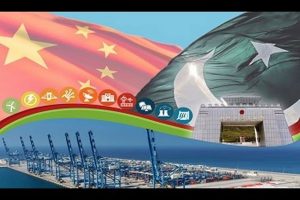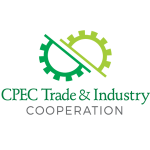 The last five years illustrate an increase in China’s state and private enterprises investment in Pakistan. The internal changes that took place in China in the decade prior to that, the private sector was given greater leeway and encouraged to invest and engage in business activities with foreign stakeholders and governments. With Chinese President Xi Jinping’s announcement of the Belt and Road Initiative in 2013, which is a combination of the Silk Road Economic Belt and 21st Century Maritime Silk Road, the Chinese investment in Pakistan has witnessed a further increase including other countries along the routes.
The last five years illustrate an increase in China’s state and private enterprises investment in Pakistan. The internal changes that took place in China in the decade prior to that, the private sector was given greater leeway and encouraged to invest and engage in business activities with foreign stakeholders and governments. With Chinese President Xi Jinping’s announcement of the Belt and Road Initiative in 2013, which is a combination of the Silk Road Economic Belt and 21st Century Maritime Silk Road, the Chinese investment in Pakistan has witnessed a further increase including other countries along the routes.
China Pakistan Economic Corridor (CPEC) is one of the six economic corridors of BRI (Belt and Road Initiative). Pakistan has wisely utilized the foreign direct investment and financing under China Pakistan Economic Corridor to solve the energy and infrastructure bottlenecks. China Pakistan Economic Corridor is termed as the flagship of Belt and Road Initiative because of timely completion of early harvest projects under CPEC. This huge success is inevitably confronted with various “third parties”, which includes politicians, business figures and media houses. They continue their negative ideological attacks on Belt and Road Initiative and tried to tarnish the positive image of China Pakistan Economic Corridor in Pakistan. In their opinion, Chinese investment is damaging the emerging market and developing countries like Pakistan. Therefore, they tag on Chinese investment as creditor imperialism, sharp power, authoritarian force, Marshall Plan, new world order has continuously sprung up on different discourse. This kind of voice and discourse is also able to affect quite many people in Pakistan.
In Pakistan, the third party is still playing up the issues of transparency, compliances, values, environmental and labour standards, debts and trade imbalances between Pakistan & China, to put pressure on CPEC cooperation between the two sides. All these “third-party factors” have imposed higher standards and requirement for the both countries to work on more specific and priority areas to make the CPEC projects more effectiveand of higher quality.
To solve these issues, firstly, both countries may attach importance to the project specific studies and intensify the research on the formulation of all kind of projects. The traditional model of support between government-to-government might be changed or adjusted. The roles of private sector, civil institutions and non-governmental organizations may be given full play, thus making full use of their expertise, high-efficiency, and proximity to common people.
Secondly, under CPEC projects, both countries may pay more attention to the quality, effectiveness and sustainability of projects, as well as the transfer of technologies and training of local Pakistani talent so they may take over relevant projects as early as possible. Pakistan as any other developing country lacked capital, technology and professional talent whereas on the other hand, China has made significant achievements and accumulated 40 years of abundant development experience through reform and opening-up, in this respect, it may share relevant practices with Pakistan and help us to enter a virtuous circle of development. Moreover, Pakistan may encourage more Chinese state-owned enterprises (SOEs) and private enterprises to carry out direct investment or joint ventures in the country, explore Public Private Partnership (PPP) model of investment and financing to reduce the sovereign debt burden on Pakistan. Both sides may also cooperate to eliminate irrelevant policy restrictions and endeavor to solve the current debt puzzle of Pakistan.
Thirdly, both countries may also strictly control the negative environmental effects of its investment and financing under CPEC. They may closely observe the ecological principals in CPEC projects, find the best balance between environment and development and avoid the destructive path of “treatment after development”.
Fourthly, China and Pakistan ought to jointly fight back against the discourse hegemony and ideological attacks from third parties. Government, media and scholars of both countries should make joint efforts to introduce a comprehensive and real story of China-Pakistan cooperation on CPEC development to the rest of the world. While the two sides are open to constructive criticisms from external countries as well as local stakeholders, they should resolutely fight back against those groundless accusations.
Last but not the least, Pakistan and China should try to reduce and avoid misunderstanding and prejudice between each other through more intensive people-to-people exchanges. It should be recognized that despite decades of development in bilateral relations, both Pakistani and Chinese people still lack enough understanding and knowledge about the national and social situation of the other side, making misunderstanding and cognitive prejudice sometimes inevitable. Through CPEC many measures have been taken by both Government to intensify the understanding between peoples, but there remain much more to be done. Amity between the people of two countries holds the ultimate key to sound relations ahead.
—The writer is Policy Head of Centre of Excellence for China Pakistan Economic Corridor (CoE-CPEC) and can be reached at muzammil.zia@cpec-centre.pk
Published in PakObserver on December 20, 2018.

 中文
中文 Urdu
Urdu










